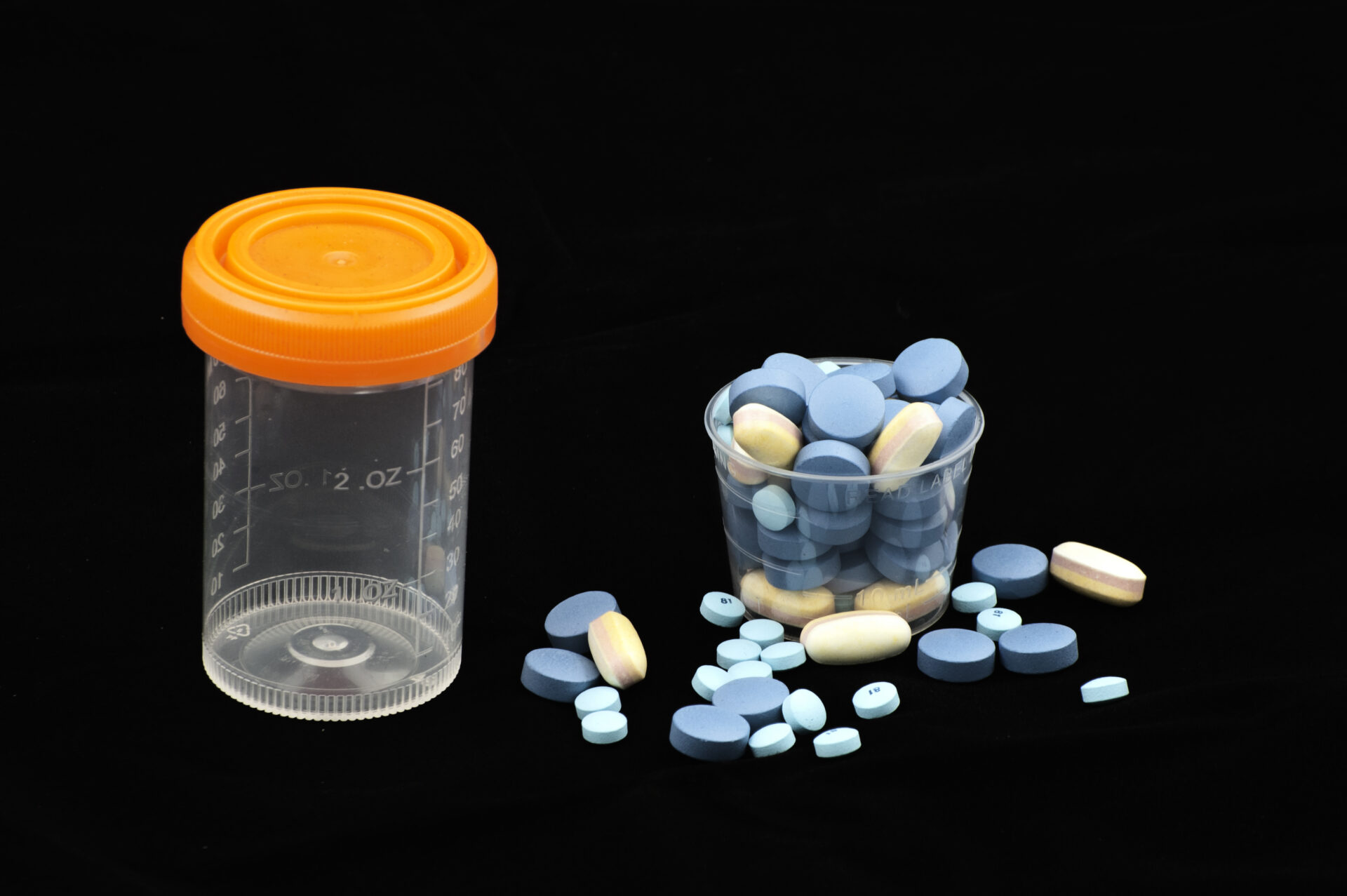Project Description
Bloodworx provides three types of drug tests; Rapid drug screens, Semi-Quantitative drug screens and Quantitative drug tests.
Rapid Drug Screen
These tests are screening tests performed on urine samples and patients can receive results in 15 minutes. The results will be either negative or positive but no concentration of the metabolites of the drug will be given. The rapid drug tests we offer include:
Rapid drug tests are also available in specially priced panels of drugs of abuse.
Semi-Quantitative Drug Screen
This is a screening test done on urine that gives a concentration of the metabolites of the drug being tested for. Results of this method must be confirmed by a more specific method such as gas chromatography/mass spectrometry (GC/MS). Results of these tests are ready within 24 working hours.
Short term effects of alcohol include feelings of euphoria, lowered inhibitions, impaired judgment, impaired perception, and impaired reaction times. Alcohol is a central nervous system depressant, but it causes the most severe long-term damage to the liver. Other long-term effects of alcohol include, high blood pressure, stroke, liver disease, nerve damage, sexual problems, permanent damage to the brain, ulcers and gastritis. A breath alcohol test measures how much alcohol is in the air you breathe out to estimate how much alcohol is in your blood.
Short term effects of alcohol include feelings of euphoria, lowered inhibitions, impaired judgment, impaired perception, and impaired reaction times. Alcohol is a central nervous system depressant, but it causes the most severe long-term damage to the liver. Other long-term effects of alcohol include, high blood pressure, stroke, liver disease, nerve damage, sexual problems, permanent damage to the brain, ulcers and gastritis. A urine test used as an indicator of alcohol consumption.
Gas chromatography–mass spectrometry (GC-MS) is used as a confirmatory test for the presence of Cocaine metabolites in urine usually after a person’s drug screen test (qualitative or semi-qualitative) has given a positive result.
Gas chromatography–mass spectrometry (GC-MS) is used as a confirmatory test for the presence of marijuana metabolites in urine usually after a person’s drug screen test (qualitative or semi-qualitative) has given a positive result.
A urine screening test used to detect the use of Cocaine. Results give a concentration of the metabolites of Cocaine that may be in a person’s urine however the presence metabolites of Cocaine must be confirmed by a confirmatory or quantitative method such as Gas chromatography–mass spectrometry (GC-MS).
A urine screening test used to detect the use of marijuana. Results give a concentration of the metabolites of marijuana that may be in a person’s urine however the presence metabolites of marijuana must be confirmed by a confirmatory or quantitative method such as Gas chromatography–mass spectrometry (GC-MS).
Quantitative Drug Test
This is a confirmatory method that uses GC/MS (Gas Chromatography/Mass Spectrometry) to separate chemical mixtures and identify its components at a molecular level. Results of these tests are ready within 2 working days.
Passing of all urine samples for drug testing must be supervised to ensure an authentic sample is submitted to the laboratory for testing.
A urine screening test used to detect the use of amphetamines. Results are qualitative (Negative/Positive).
Amphetamines are stimulant drugs, which means they speed up the messages travelling between the brain and the body.
Some types of amphetamines are legally prescribed by doctors to treat conditions such as attention deficit hyperactivity disorder (ADHD) and narcolepsy (where a person has an uncontrollable urge to sleep). Amphetamines have also been used to treat Parkinson’s disease. Other types of amphetamines such as speed are produced and sold illegally.
Regular use of amphetamines can lead to reduced appetite, extreme weight loss, restless sleep, dry mouth, dental problems, regular colds/flus, anxiety, paranoia, depression and increased risk of stroke.
A urine screening test used to detect the use of barbiturates. Results are Qualitative (Negative/Positive)
Barbiturates act on the central nervous system by slowing down its functioning. Barbiturates were historically popular for the treatment of psychiatric and sleep disorders, and they are still used for anesthesia and treatment of a number of conditions such as epilepsy and headaches. Barbiturates are highly addictive, and they also present a very high overdose risk as they cause many body systems to shut down.
A urine screening test used to detect the use of benzodiazepine. Results are Qualitative (Negative/Positive)
Benzodiazepines are prescribed to treat a wide variety of psychiatric and sleep conditions, but they are very commonly abused. Benzos are highly addictive and can cause numerous medical and psychiatric problems when not used as intended.
A urine screening test used to detect the use of Cocaine. Results are qualitative (Negative/Positive).
The effect is described as euphoric with increased energy, reduced fatigue, and heightened mental alertness. Users may be talkative, extraverted, and have a loss of appetite or need for sleep. The psychoactive and pleasurable effects are short-lived without continued administration.
Long-term effects of cocaine use include insomnia, depression, anxiety, paranoia, psychosis, eating disorders and weight loss, hypertension, irregular heartbeat, sensitivity to light and sound, hallucinations, cerebral atrophy (wasting of the brain) and impaired thinking.
Cotinine is the metabolite of nicotine. Nicotine is a chemical found in tobacco products, including cigarettes and chewing tobacco. Measuring cotinine in blood is used to determine exposure to nicotine for both smokers and nonsmokers exposed to environmental tobacco smoke. Measuring cotinine is preferred to measuring nicotine because cotinine remains in the body longer thank nicotine.
A urine screening test used to detect the use of marijuana. Results are qualitative (Negative/Positive).
Tetrahydrocannabinol (THC) and other cannabinoids are found in marijuana. Cannabinoids create feelings of elation, known as a high, but they also negatively impact mental and physical functioning. Cannabinoids are the most widely abused drugs after alcohol, and they are increasingly gaining legal acceptance. Although considered less addictive than other drug classifications, cannabinoids can seriously damage a person’s mental and physical health.
This is a screening urine test for MDMA (3,4-methylenedioxy-methamphetamine) also known as Ecstasy and Molly. The results of this test are qualitative (Negative/Positive).
MDMA (3-4 methylenedioxymethamphetamine) is a synthetic, psychoactive drug that acts as both a stimulant and psychedelic, producing an energizing effect, as well as distortions in time and perception and enhanced enjoyment from tactile experiences.
This illicit drug exerts its primary effects in the brain on neurons that use the chemicals serotonin, dopamine and norepinephrine to communicate with other neurons. Serotonin is most likely responsible for the feelings of empathy, elevated mood, and emotional closeness experienced with this drug.
A urine screening test used to detect the use of methadone. Results are qualitative (Negative/Positive).
Methadone is an opioid medication. Methadone reduces withdrawal symptoms in people addicted to heroin or other narcotic drugs without causing the “high” associated with the drug addiction. Methadone is used as a pain reliever and as part of drug addiction detoxification.
A urine screening test used to detect the use of methamphetamine. Results are qualitative (Negative/Positive).
Methamphetamine, also called speed, is a potent and addictive central nervous system stimulant, chemically related to amphetamine, but with greater central nervous system side effects. It is a white, odorless, bitter-tasting powder that easily dissolves in water or alcohol. It has a high potential for abuse and is available legally only by prescription. Methamphetamine, when abused, is commonly referred to as “speed”, “meth”, or “chalk” and has been in use since the early 1960s. When abused, methamphetamine is usually smoked, snorted, injected, or taken orally.
A urine screening test used to detect the use of opiates. Results are qualitative (Negative/Positive).
Also called opiates, opioids are either derived from the drug opium or chemicals designed to mimic it. Opioids work by interacting with neurotransmitters in the brain and blocking the signals that they are sending. This enables opioids to serve as powerful pain killers, but it also can cause feelings of intense pleasure, leading to addiction.
A urine screening test used to detect the use of phencyclidine. Results are qualitative (Negative/Positive).
Phencyclidine (PCP) is considered a dissociative drug, leading to a distortion of sights, colors, sounds, self, and one’s environment. PCP was developed in the 1950s as an intravenous anesthetic, but due to the serious neurotoxic side effects, its development for human medical use was discontinued.
Other Services
OPENING HOURS
| Monday – Friday | 7:30 – 5:00 |
| Saturday | 8:00 – 1:00 |



